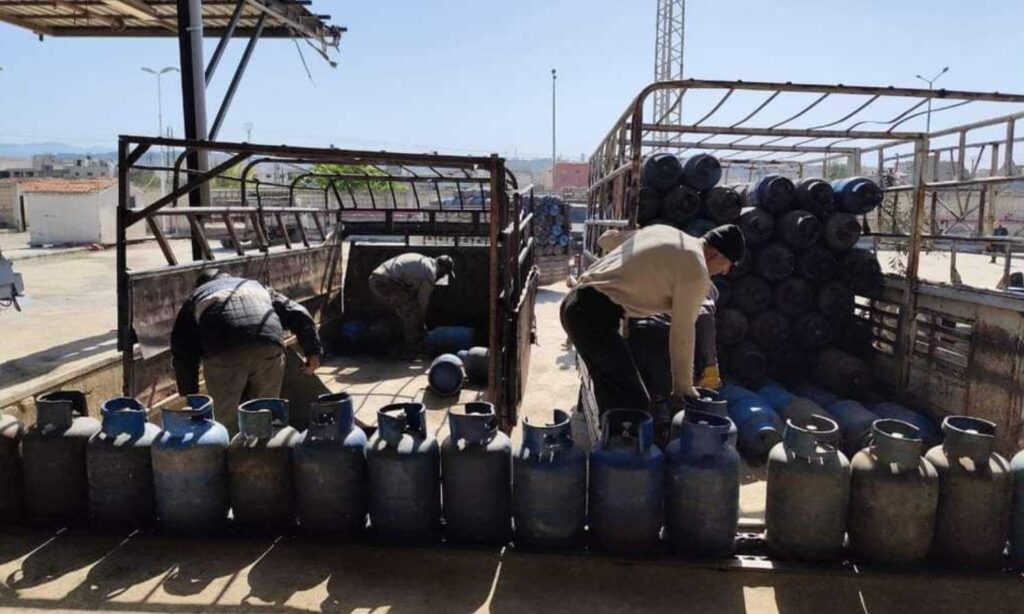Enab Baladi – Linda Ali
With the beginning of Ramadan on March 11, gas cylinder prices in the black market have seen an unprecedented rise in the majority of Syrian governorates, reaching up to 375,000 Syrian pounds in some areas, amid variations from one city to another.
In areas under Syrian regime control, a gas cylinder is sold at three different prices: the state-subsidized price is 15,000 Syrian pounds, while the same cylinder for cards excluded from subsidy is priced at 75,000 pounds, with certain limits, at a rate of one cylinder every two to two and a half months approximately.
The third type is the free (unsubsidized) gas sold on stands, which saw an increase before Ramadan due to the increased demand for cooking gas during the specific time of iftar, unlike other days when families would time their meals to coincide with the availability of electricity if their gas cylinder ran out.
Skyrocketing prices
In the Hama governorate, Afaf (46 years old) said that she was forced to buy a gas cylinder for 225,000 pounds after running out of gas at the beginning of Ramadan. She added that the price of a cylinder in the black market did not exceed 125,000 pounds last February.
She mentioned that it takes up to 65 days to receive a message to collect the subsidized gas, which cannot possibly meet the household needs by any means.
Meanwhile, in Damascus, prices range between 250,000 and 325,000 pounds, according to Nadia (29 years old), who lives in the Jaramana district and works at one of the women’s support organizations in the Syrian capital. She pointed out that the last time she bought a gas cylinder from the black market was at the end of December 2023, when she paid 130,000 pounds for it.
Nadia is unable to obtain a subsidized gas cylinder because she does not possess a family card or “smart card.” She is originally from Homs city and lives away from her family in the capital for work-related reasons. She added that she tries to economize gas consumption as much as possible due to the high price.
In Homs, the price of a cylinder reached 200,000 pounds, according to citizens inside the city. Jibran (42 years old), a public sector employee, said that he was not able to buy a new one despite his home’s cylinder having been empty since the end of last February, and the family has no alternative but to wait for electricity to come to use a laser stove for cooking.
Lama (21 years old), a student at the Faculty of Civil Engineering at Tishreen University and living with four of her classmates in a rented house in Latakia city, bought a gas cylinder on the current March 8th and paid 300,000 pounds for it after negotiating with the distributor who initially requested 325,000 pounds.
Lama said that she and her roommates are used to buying cylinders from the black market because they do not possess family or smart cards. The last time she paid 150,000 pounds for one was at the end of 2023, noting that the distributor informed her that it is currently difficult to secure a cylinder without disclosing the reason, and she waited a full week until he managed to procure it for her.
The people in Syria live in a deteriorating economic and living reality: the minimum government wages in regime-controlled areas amount to about 279,000 pounds (one dollar equals 14,000 pounds), while the average cost of living exceeds 10.3 million Syrian pounds, and the minimum cost of living is 6.5 million pounds.

